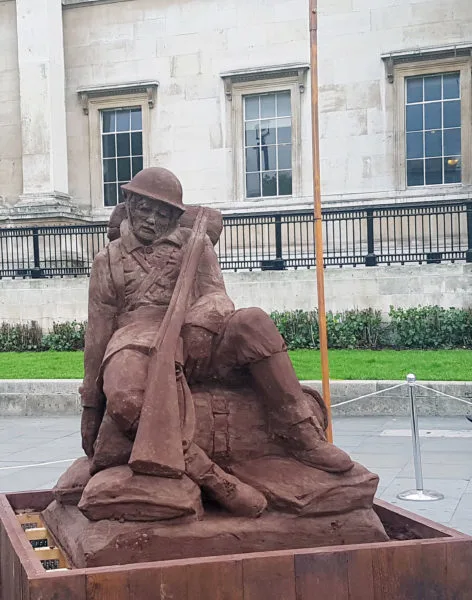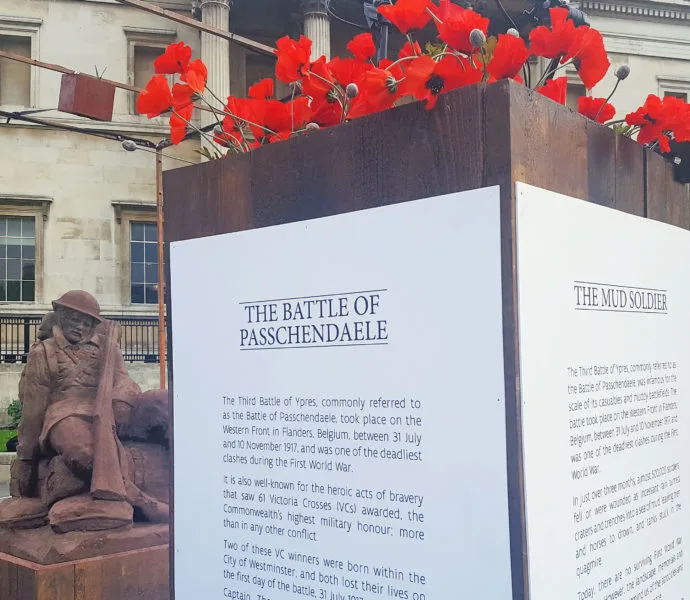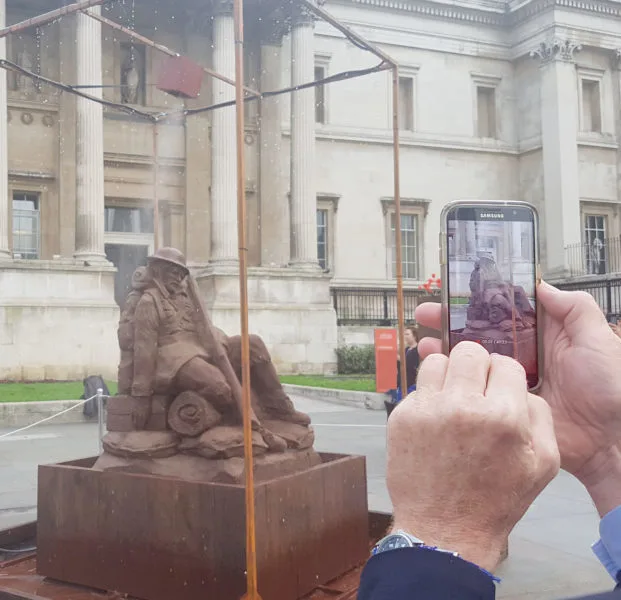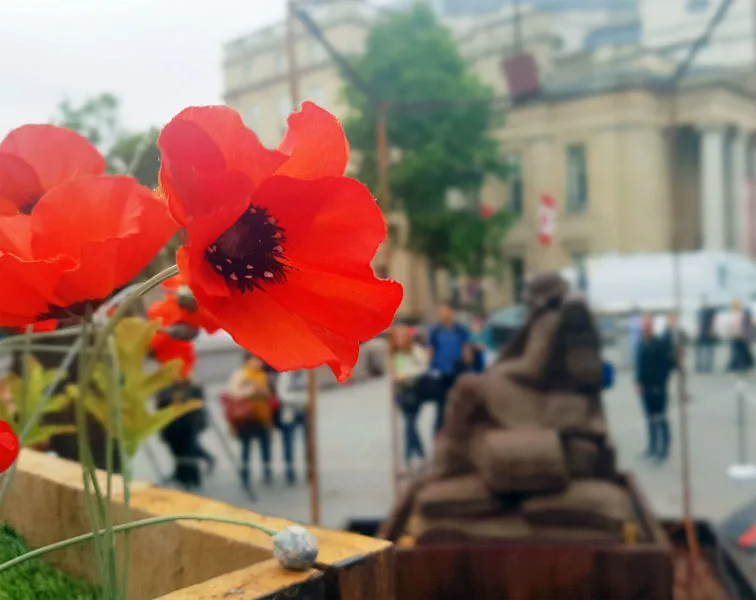Last updated: 29 July 2023
Unveiled today, Tuesday 25 July 2017 at 8am, in London’s Trafalgar Square was the Mud Soldier, ahead of the commemorations for the centenary of the Third Battle of Ypres (Battle of Passchendaele) next week. The Battle of Passchendaele was one of the bloodiest battles of the First World War and so its upcoming centenary is an important date to remember.
[lwptoc]
The Mud Soldier, Trafalgar Square, London

Commissioned by Visit Flanders, the Mud Soldier sculpture by Dutch twins Damian and Kilian Van Der Velden, depicts a weary soldier, was created from mud and sand from Passchendaele, Flanders Fields in Belgium.
The Battle of Passchendaele
The Third Battle of Ypres became infamous not only for the scale of casualties, but also for the thick muddy morass, caused by appalling weather conditions and record rainfall. The Battle of Passchendaele was close to 500,000 men killed in action, injured, or missing in action, a staggering number which is difficult to truly comprehend. The significance of the battle can be noted by the number of Victoria Crosses awarded during the Third Battle of Ypres, a staggering 61. Two were awarded to Westminster-born soldiers and one awarded to a Newcastle-born Australian, Capt Clarence Smith Jeffries.
The battle dragged on for 3 ½ months, from 31 July to 6 November 1917, with a tragic territorial gain of just 5 miles. The number of those killed, injured or missing was in the region of 500,000. It was also a considerable impact for the Australian armed forces with our artillery being involved for the entire campaign and the number of Australian casualties at 11,000 in just over a week, 38,000 over the four months.
A Fleeting Memorial
The work of art is on display in the North Terrace of London’s Trafalgar Square outside the National Gallery for just four days. The ephemeral sculpture will be at the mercy of the elements, and is expected to dissolved by Friday 28 July 2017.
If you’re interested in learning more about Ypres, The Battle of Passchendaele, and the impact of the First World War on this region of Belgium then have a read of our post covering our visit to the Ypres Reservoir Cemetery, In Flanders Field Museum, Menin Gate, Memorial Museum Passchendaele, and Tyne Cot Cemetery.
“In four days this striking artwork will have vanished but it will have made a lasting impression on the thousands of people who visit Trafalgar Square and beyond”
– Westminster Councillor Cale Robathan
Update
Following the four day event, Visit Flanders released a time-lapse video of the dissolution of the Mud Soldier on their YouTube channel.


